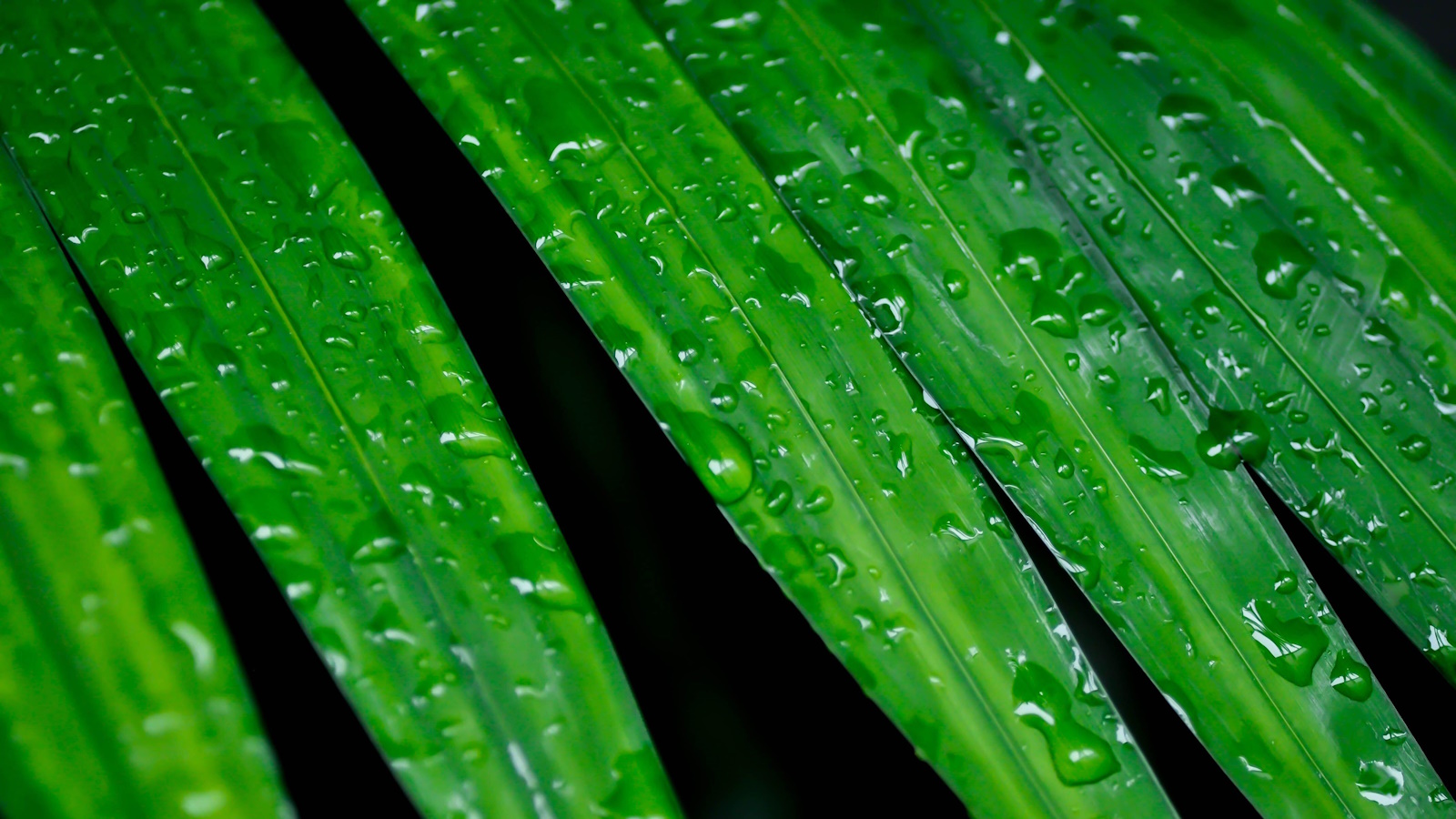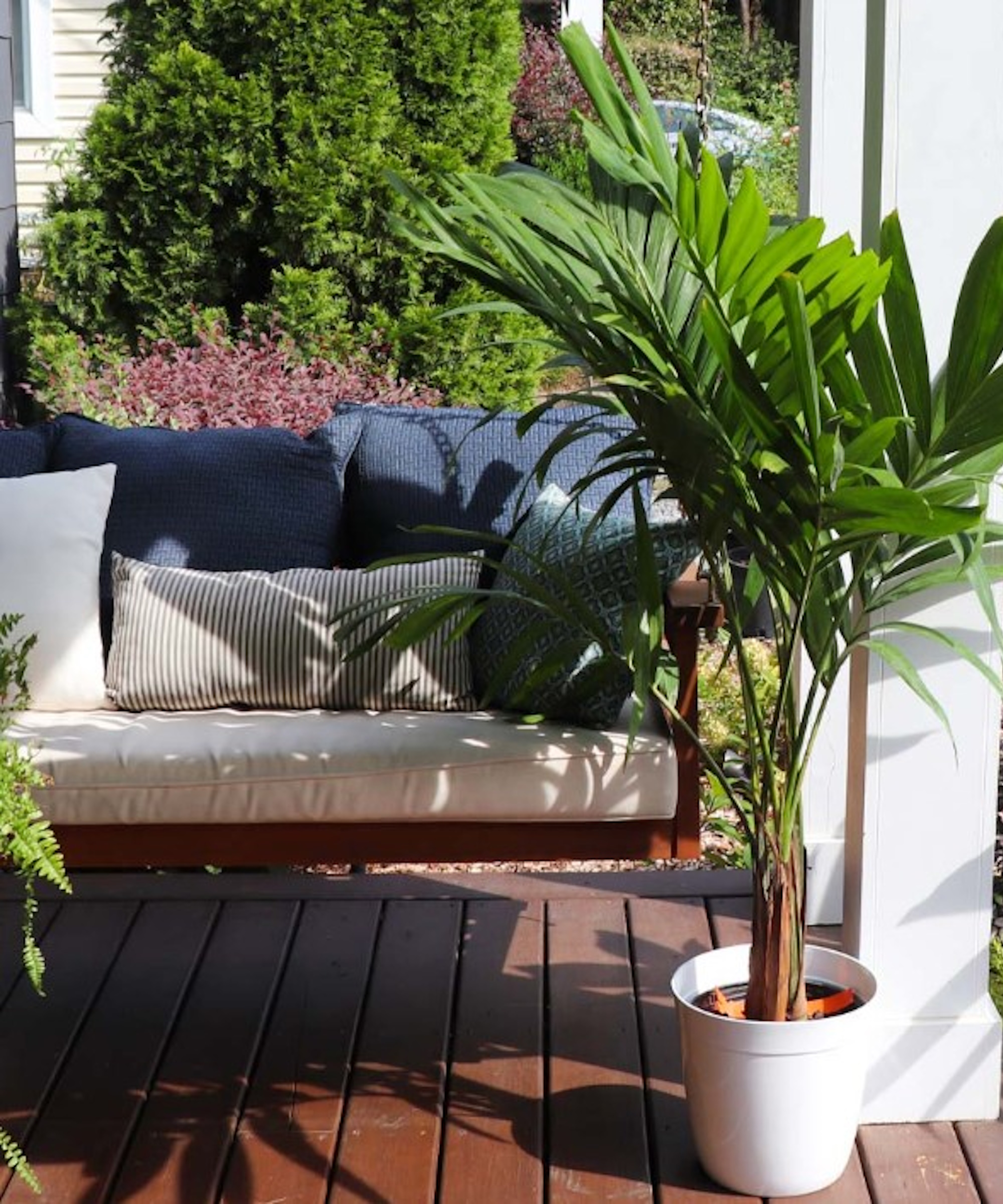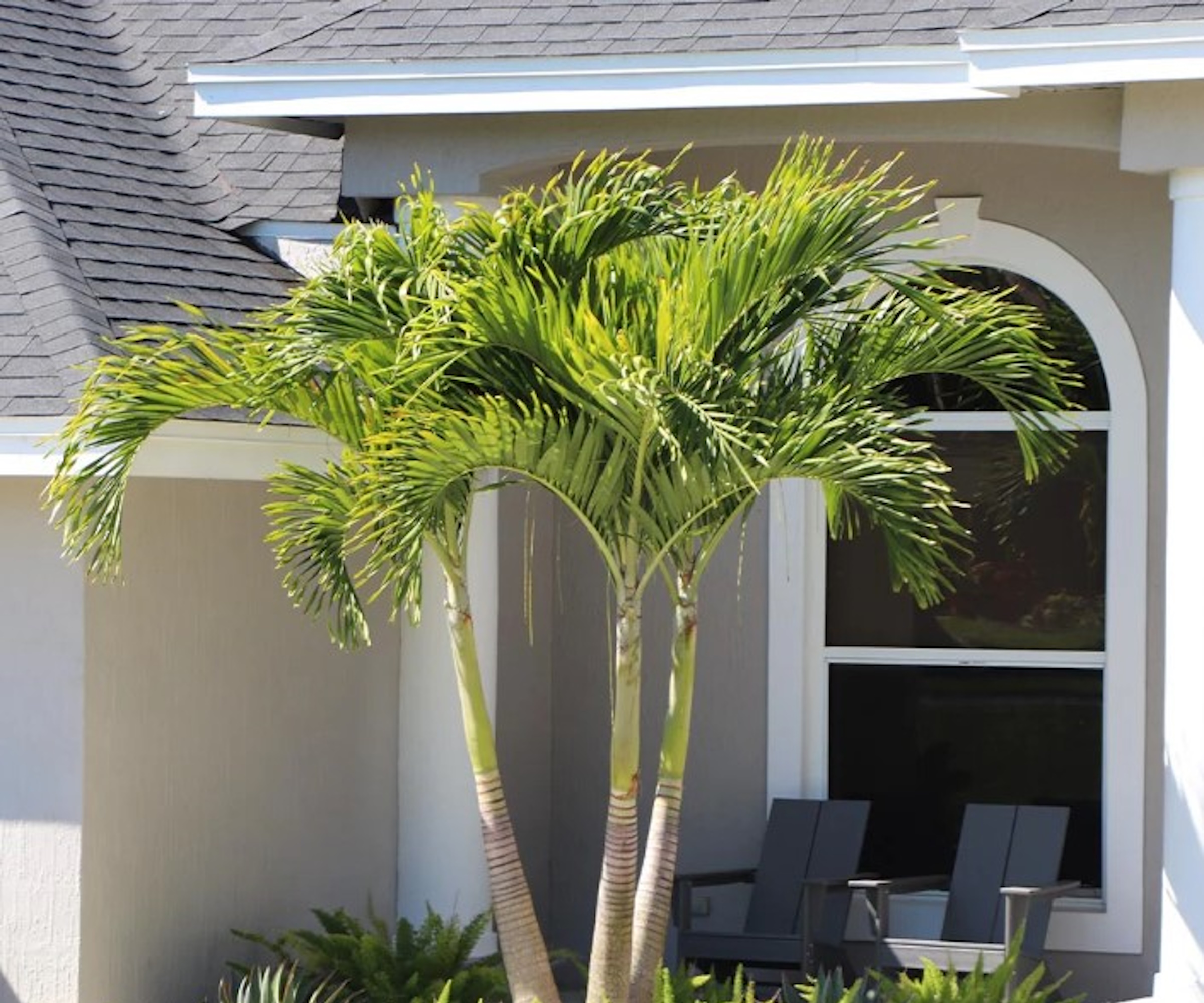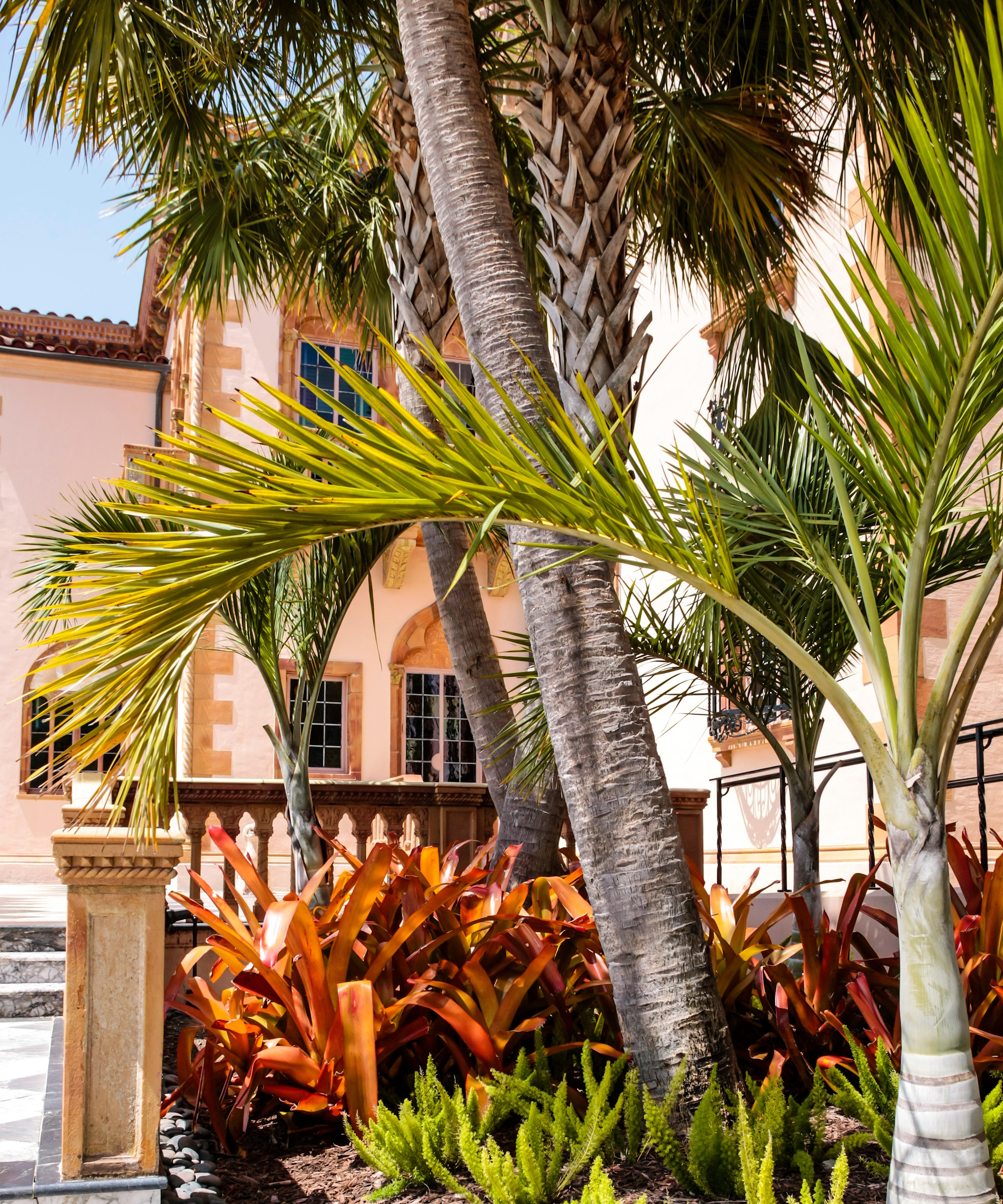
A Christmas palm tree, also known as the Adonidia Merrillii, is a variety of palm known for the signature red berries it produces in late fall and winter. Native to the Philippines, Christmas palms thrive in tropical climates, including in Hawaii and the southern half of Florida.
As a smaller variety of palm, typically reaching no taller than 25 feet, it is a popular choice as a houseplant, a patio plant or to add a little drama and structure to a garden landscape. If you're looking for new tropical garden ideas, bringing a Christmas palm into your collection is the perfect way to start, as given the right growing conditions, these trees don't require a huge amount of effort.
We asked tropical plant and palm expert, Alexandra Moreno, to talk us through how to grow and best care for a Christmas palm tree, and what conditions it needs to thrive indoors and out.
Where to plant and position a Christmas palm tree

Christmas palms can be kept indoors or on a patio in deep container pots, and are hardy from USDA zones 3-11. If planted outside in the yard, they prefer zones 10-11 to grow well and survive the winter.
'Although typically limited to warmer regions, you can plant Christmas palms in a container, and when the weather starts getting chilly just bring them indoors for the colder season. That way you get to enjoy them year round,' says Alexandra.
It's recommended to only plant your Christmas palms outside if you live in a climate where the weather does not get cooler than 40°F in the winter. Otherwise, your plants will experience cell-freeze: the cells of the plant will die as they are not acclimatized to living in a non-tropical environment.
'If you are planting your Christmas palms outdoors, make sure they are in a spot that allows them to get full sun, ideally equivalent to more than six hours of sun per day,' says Alexandra.
The AH-20 sunlight calculator from Amazon is a handy tool designed to record the levels of sunlight achieved by different parts of your yard. It's a useful way to decide where best to plant your palm, and an even better care solution to monitor the sunlight your plant obtains daily.
To use one, press the meter three to four inches into the ground by your Christmas palm, sitting it not quite directly under the leaves (the leaves will block the meter from measuring sun levels accurately). It can also be used for tropical plants that grow happily indoors.
Ideal conditions for a Christmas palm to flourish

Alexandra breaks down the main four basic needs of a Christmas palm, which is easy to care for so long as the conditions are right.
Sunlight
'Christmas palms thrive in full sun and require a minimum of six hours a day of full light. If planting indoors, make sure you place your plant's pot in an area where it receives plenty of direct sunlight,' she says.
This makes a Christmas palm one of the best indoor plants for direct sunlight. Just be mindful about potentially scorching your leaves if the sunlight is intense. Even these palms can experience too much of a good thing.
Water
Space out watering sessions to allow the roots enough time to dry between waterings. If this isn't done, your palms roots may begin to rot. For the first month, water thoroughly twice a week. After the palm is established, water it once a week.
'The amount of water needed per watering session is equivalent to the volume of the planting hole that was dug for each palm. Containerized plants require more frequent watering than those planted in the ground.
'Adding mulch over the roots can help with water retention, but ensure the mulch does not touch the base of the palm to help prevent rot,' says Alexandra.
Fertilizing
'Fertilize newly planted palms with a palm-specific fertilizer,' she adds, such as the Nelson NutriStar palm food from Amazon. Follow the instructions on the label to see the amount and frequency needed.
'Fertilize at the start of spring, summer and fall. Indoor palms need only spring and summer fertilization.'
Soil
'Palms tolerate most soil types, but they need to have good drainage. Adding coarse sand to the soil mix improves drainage, at a ratio of 70% soil to 30% sand.'
The Mosser Lee ML1113 desert sand from Amazon is an affordable choice. If you're planting your Christmas palm outside, it's recommended to dig a hole twice as deep and twice as wide as the rootball attached to its base. This allows the plant adequate space to continue growing healthily in the ground.
You can find Christmas palm trees available to purchase from Fast Growing Trees.
How to care for a Christmas palm in winter

'In terms of winter care, if the outside temperature falls below the 40°F (4.5°C) mark, bring your potted Christmas palms indoors,' says Alexandra.
If it's still quite chilly in your home, you could consider investing in a heat lamp, such as this grow light from Amazon which is adjustable and has a timer. With this timer, you can ensure that your Christmas palm is soaking in the six hours of light and warmth it requires per day.
FAQs
Do I need to prune a Christmas palm?
Pruning is only needed if you need to detach a leaf (also known as a frond) which has browned and died before it falls off of the plant naturally.
'It is not necessary to prune your Christmas palm,' says tropical plant and palm expert, Alexandra Moreno. 'When a frond dies, it will detach and fall off on its own. However, if you decide to prune the brown frond before it naturally falls off, be careful not to do so when there is still some green color remaining in the frond.'
If you don't trim palm trees safely, it can cause damage to the living parts of your plant.
If you're a fan of this low-maintenance palm, why not look into some more of the best low-maintenance trees? The ones compiled in this list are perfect for a front yard, and will add a variety of textures, colors and blooms to the front of your home.







